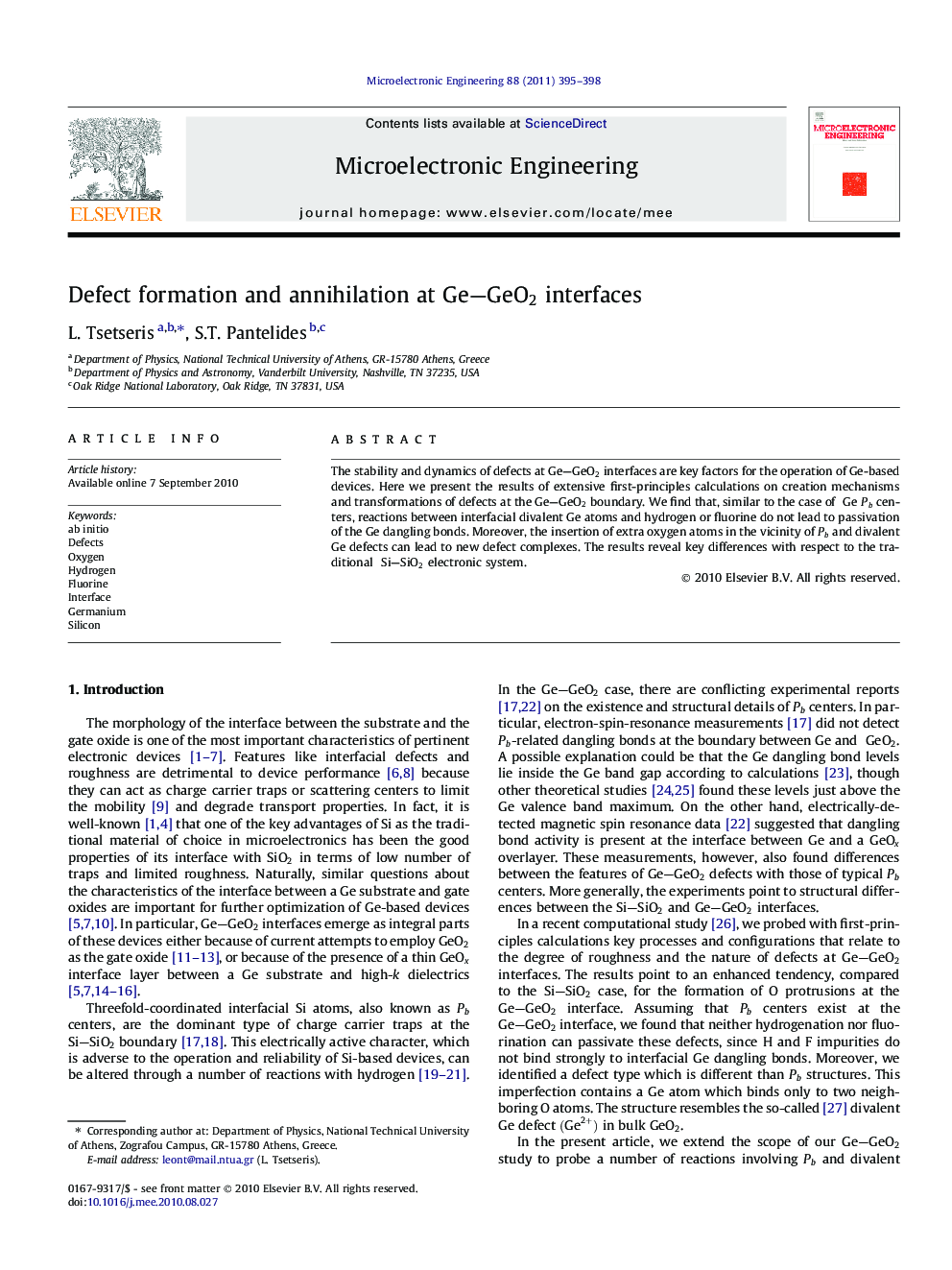| Article ID | Journal | Published Year | Pages | File Type |
|---|---|---|---|---|
| 544647 | Microelectronic Engineering | 2011 | 4 Pages |
Abstract
The stability and dynamics of defects at Ge–GeO2Ge–GeO2 interfaces are key factors for the operation of Ge-based devices. Here we present the results of extensive first-principles calculations on creation mechanisms and transformations of defects at the Ge–GeO2Ge–GeO2 boundary. We find that, similar to the case of GePb centers, reactions between interfacial divalent Ge atoms and hydrogen or fluorine do not lead to passivation of the Ge dangling bonds. Moreover, the insertion of extra oxygen atoms in the vicinity of PbPb and divalent Ge defects can lead to new defect complexes. The results reveal key differences with respect to the traditional Si–SiO2 electronic system.
Related Topics
Physical Sciences and Engineering
Computer Science
Hardware and Architecture
Authors
L. Tsetseris, S.T. Pantelides,
